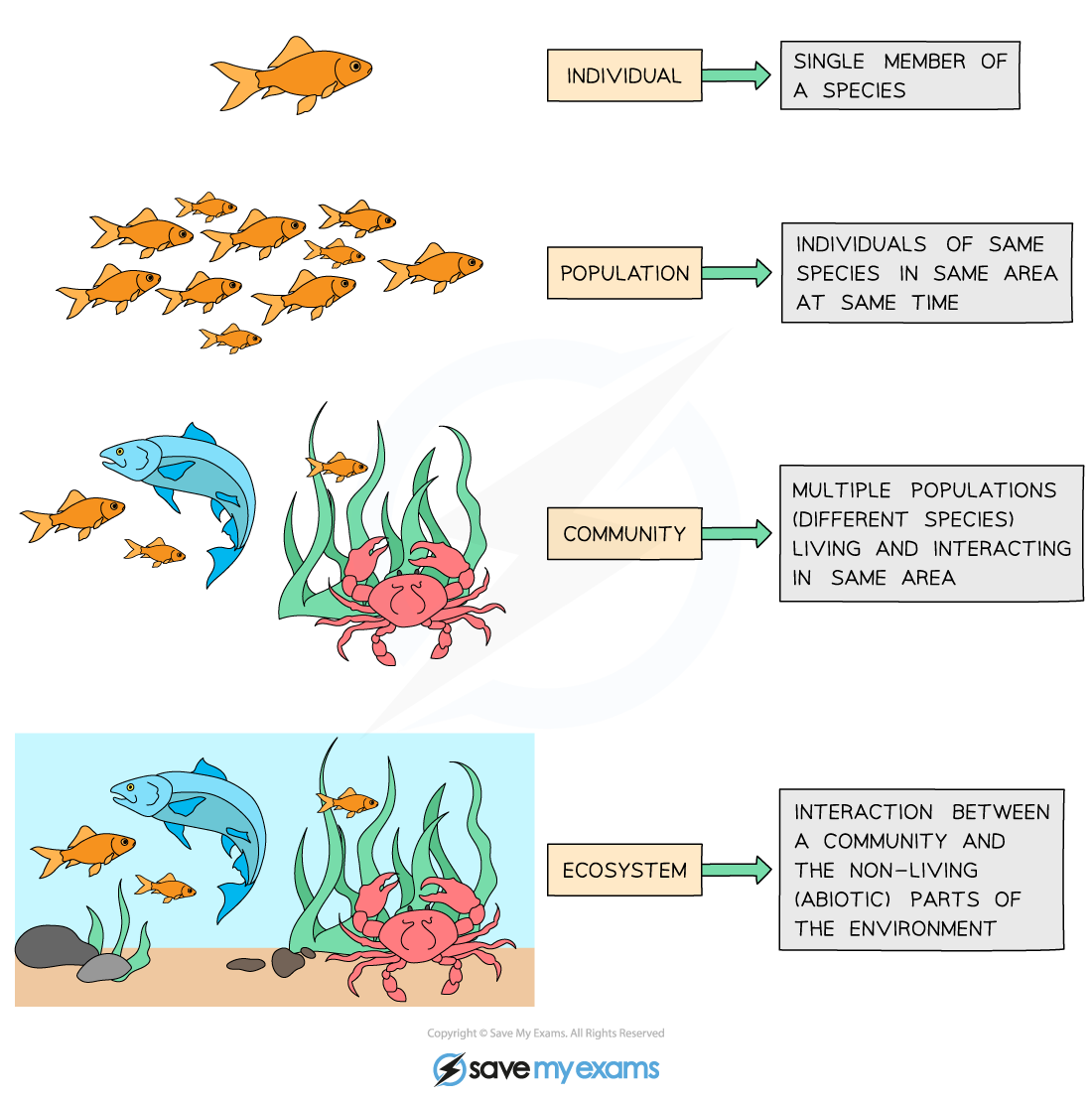Community
- Species do not exist by themselves in their own isolated environment; they interact with other species, forming communities
- A community can be defined as:
Multiple populations of different species living and interacting in the same area
- For example, a garden pond community is made up of populations of fish, frogs, newts, pond snails, damselflies and dragonflies and their larvae, pondweed, water lilies, and all other populations living in the pond
Ecosystems
- Communities interact with the non-living components of the environment they live in, forming ecosystems
- An ecosystem can be defined as:
A community and its interactions with the non-living parts of its environment
- Ecosystems are mostly self-contained
- There is a flow of energy within an ecosystem and the nutrients within it are recycled (e.g. the carbon, nitrogen and phosphorus cycles)
- There are both biotic components and abiotic components within an ecosystem
- Ecosystems vary greatly in size and scale
- Both a small pond in a back garden and the open ocean could be described as ecosystems
- A human being could also be described as an ecosystem (there are thousands of species of bacteria living on and in every person)
- Ecosystems vary in complexity:
- A desert is a relatively simple ecosystem
- A tropical rainforest is a very complex ecosystem
- No ecosystem is completely self-contained, as organisms from one ecosystem are often linked with another ecosystem somehow
- For example, many birds species are able to migrate long distances to find food sources or breeding locations from multiple ecosystems
Example of an ecosystem
- A forest is an example of a complex ecosystem
- There is a large community of organisms including trees, birds, small and large mammals, insects and fungi
- The abiotic components of the ecosystem include the soil type, dead leaves, water from the rain and streams, the rocks, and any other physical or chemical factors
- The abiotic components of the ecosystem influence the community of organisms (e.g. by providing habitat, nutrients and other resources organisms need in order to survive and reproduce)

Levels of organisation in an ecosystem
